Greywater harvesting image gallery
Examples harnessing the potential of free, on-site greywater…
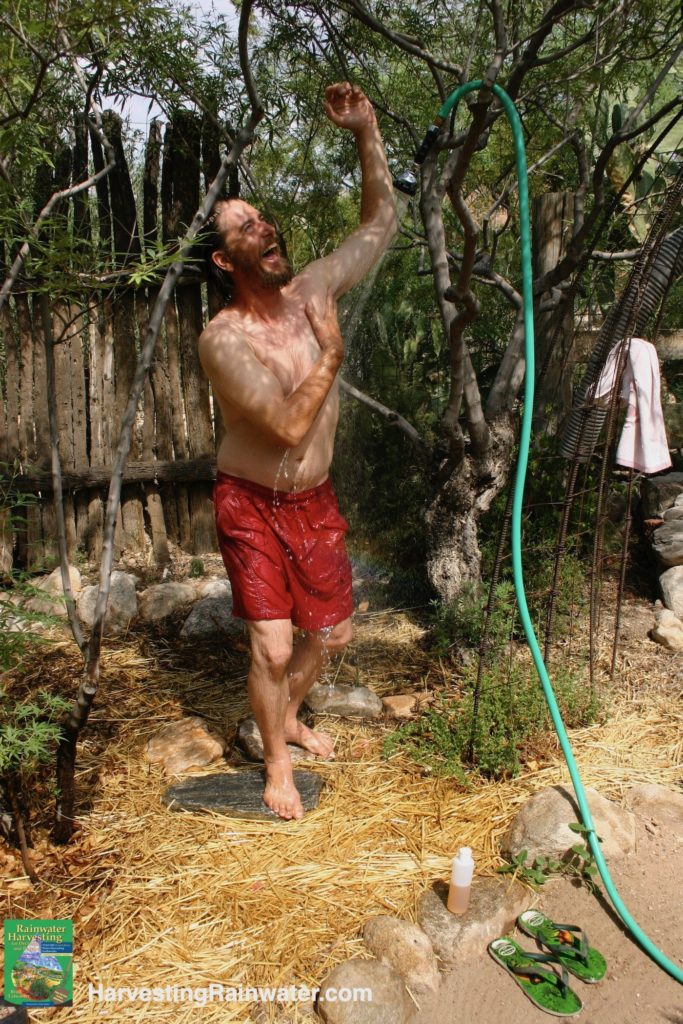
Photo: Brad Lancaster
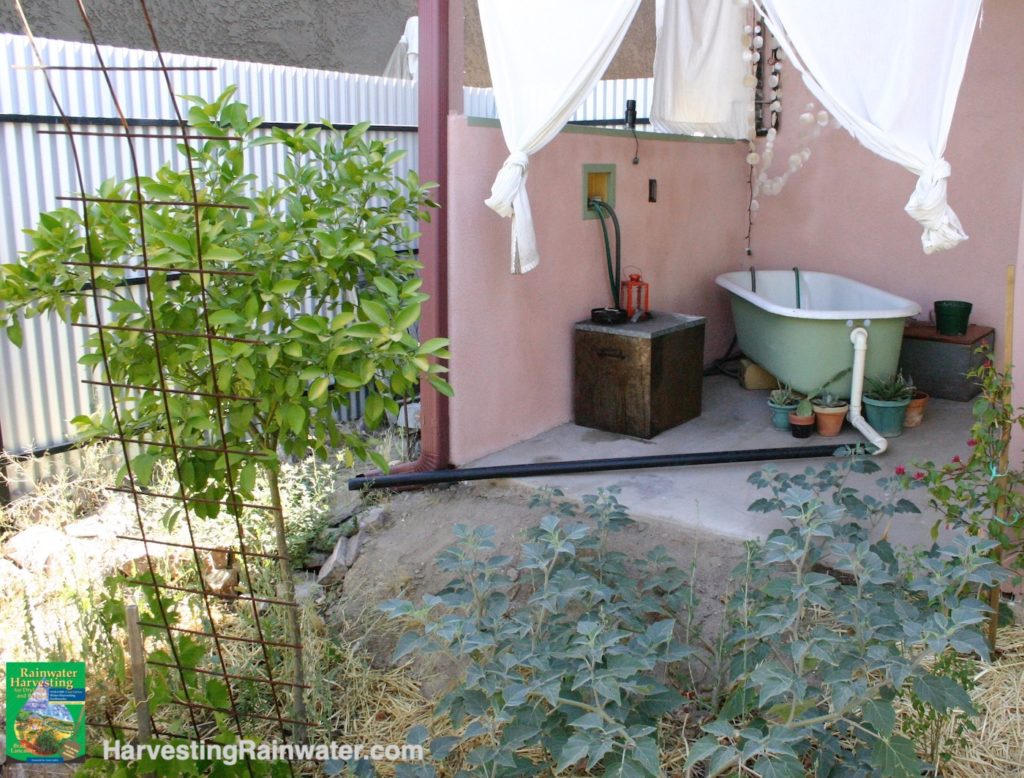
Photo: Brad Lancaster
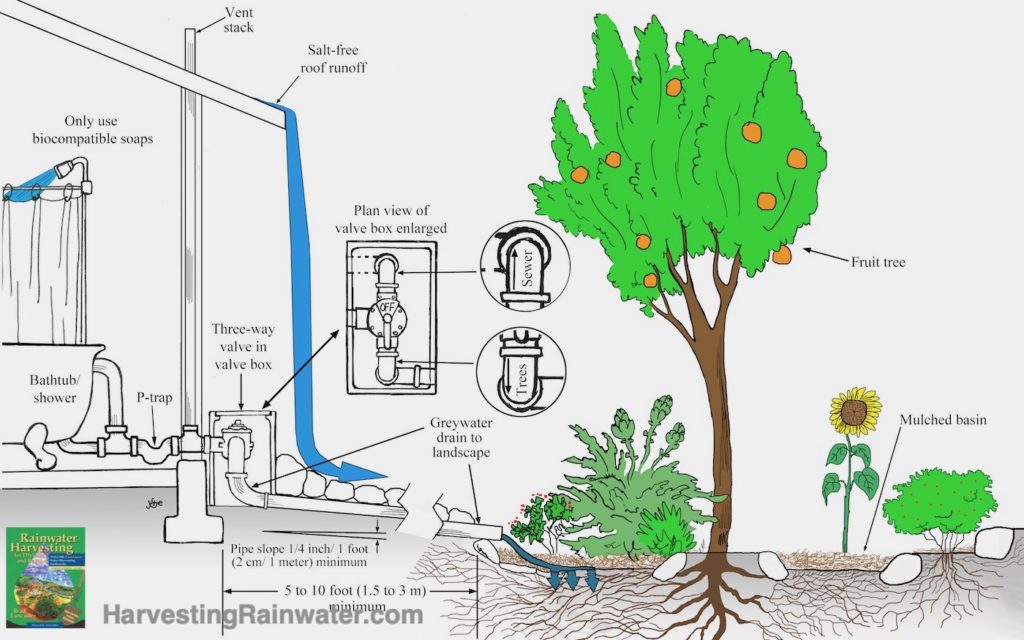
A three-way valve(downstream of the P-trap and vent) in a valve box allows for distribution of greywater to either the landscape or the sewer.
The end of the greywater pipe discharges 2 to 3 inches (5 to 8 cm) above the mulch in the basin to prevent roots from growing into the pipe and solids from backing up and clogging the pipe. Greywater immediately infiltrates beneath the surface of the mulch into the soil of level-bottomed basins to be used by plants.
Illustration: Joe Marshall
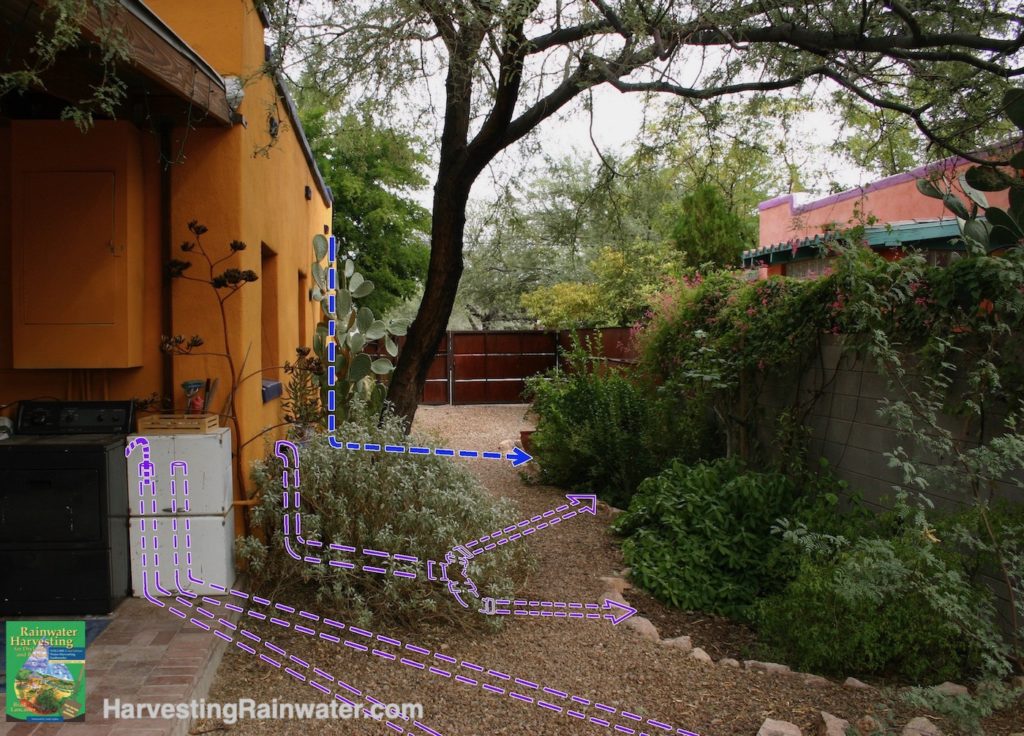
Photo: Brad Lancaster
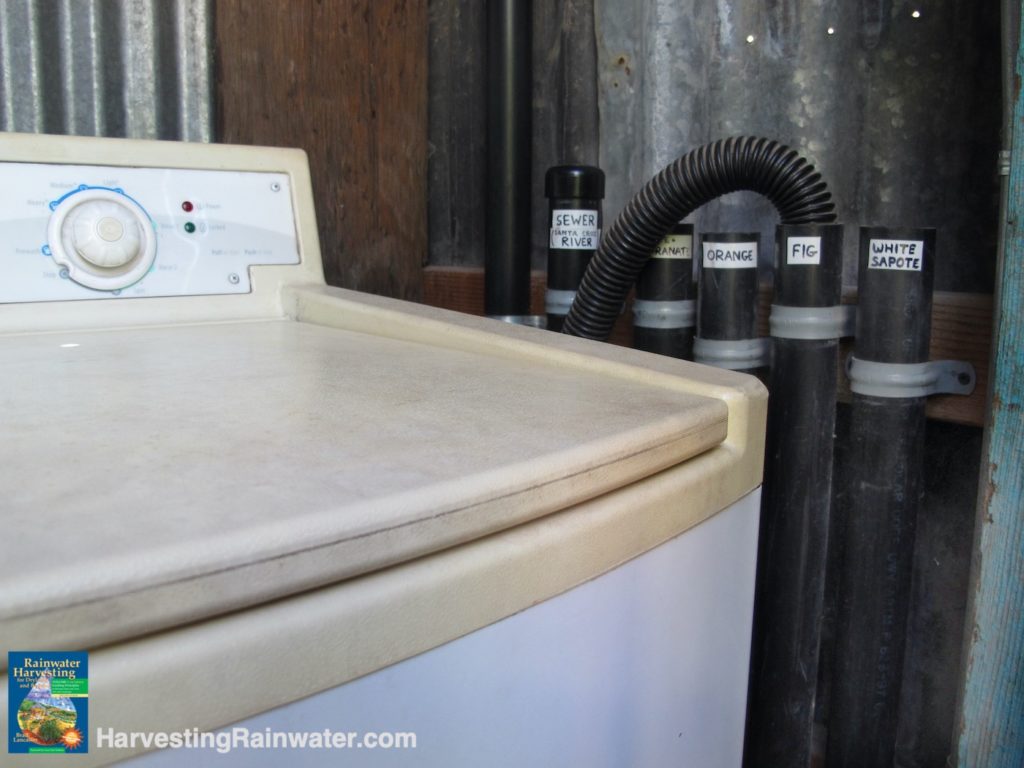
Drain hose from washer is placed in a different pipe with every load of laundry.
Note: include an additional marked drainpipe going to the sewer (capped when not in use) as an option for households that occasionally use non-biocompatible detergents or that have seasonally saturated or frozen soils.
Photo: Brad Lancaster
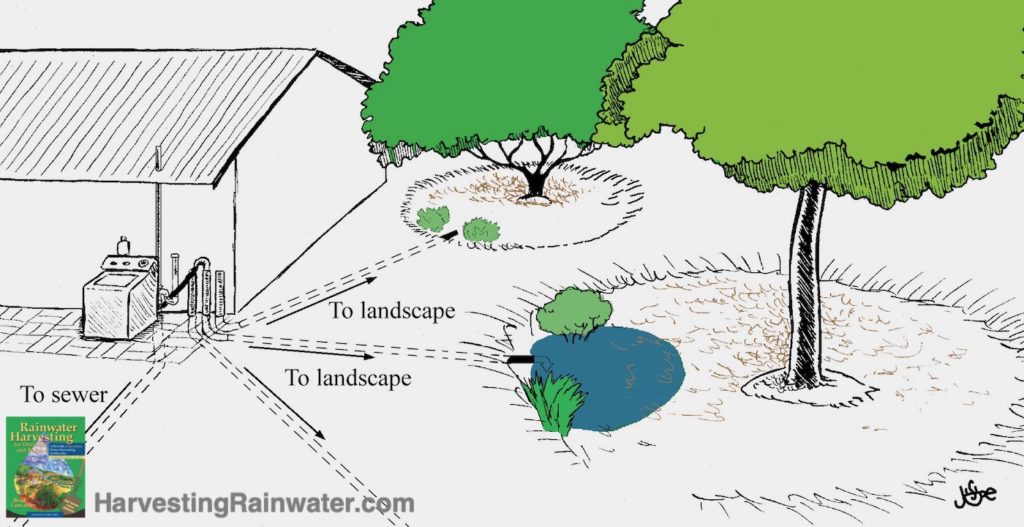
Pipes maintain a minimum 2% slope.
Note: outdoor installations do not require P-traps or vent stacks for greywater drains, but they are required for the sewer drains.
Illustration: Joe Marshall
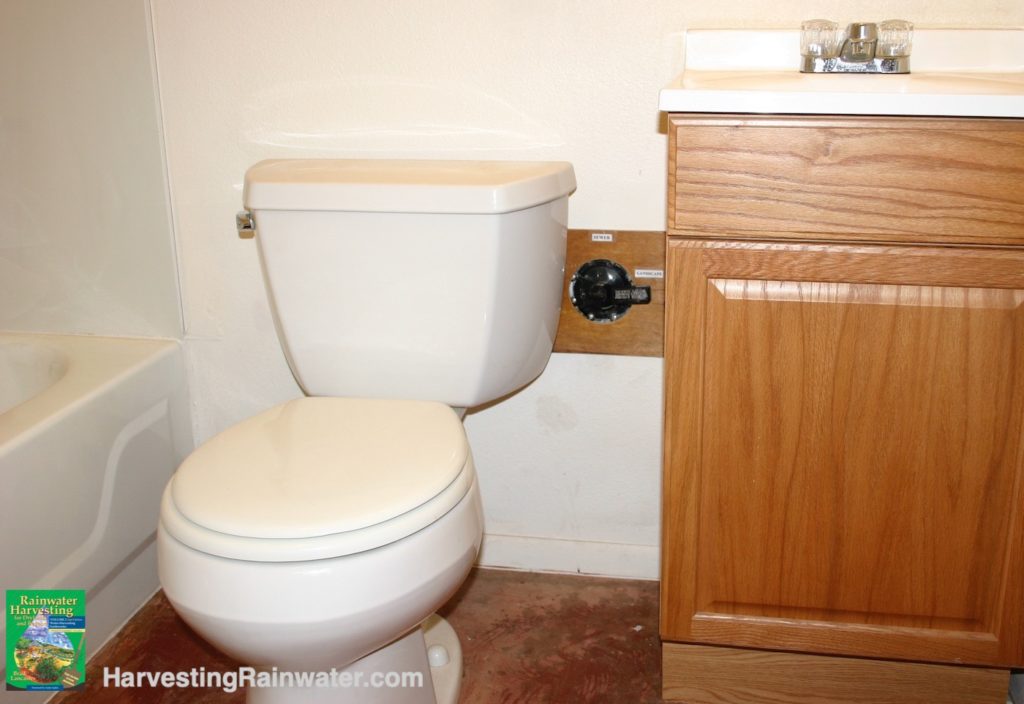
See “Rainwater Harvesting for Drylands and Beyond, Volume 2, 2nd Edition” for more information.
Photo: Brad Lancaster
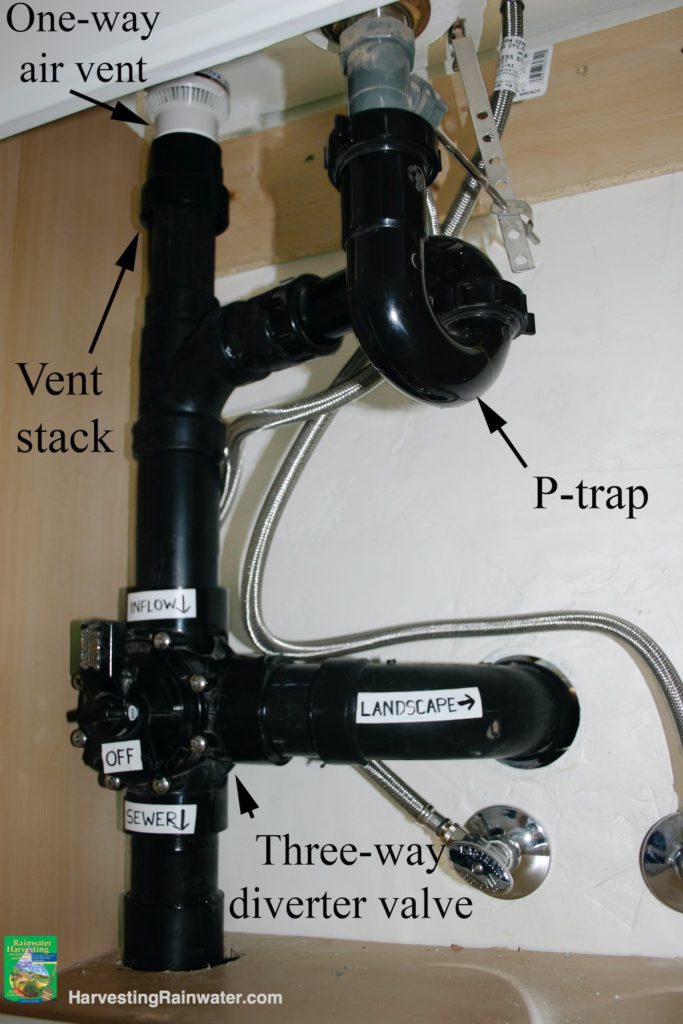
Drain water goes down the sink drain, through the P-trap, down the vertical pipe/vent stack to the 3-way valve. T
he valve handle is cut shorter to fit the space.
The vertical pipe/vent—with a one-way air vent [or air admittance vent] that sits atop the vent stack—creates an air break so water won’t siphon out of the P-trap.
Photo: Brad Lancaster
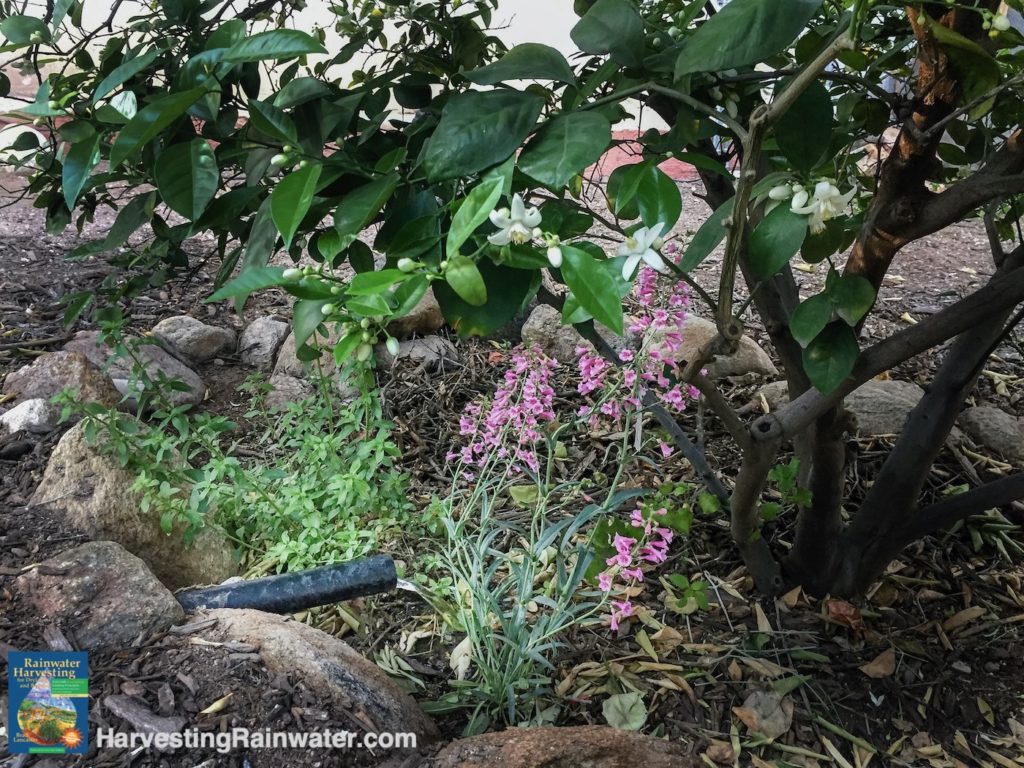
The pipe outlet discharges 3 inches (7.6 cm) above the surface of the mulch to keep roots from growing into and clogging the discharge pipe.
Greywater immediately infiltrates through the mulch to the soil below.
Greywater is dispersed to multiple basins to reduce flow to any single basin, enhancing infiltration further. Basins are sized to contain and infiltrate the peak surge of greywater that could potentially be discharged in a short time period.
See “Rainwater Harvesting for Drylands and Beyond, Volume 2, 2nd Edition” for info on how to do all this.
Photo: Brad Lancaster
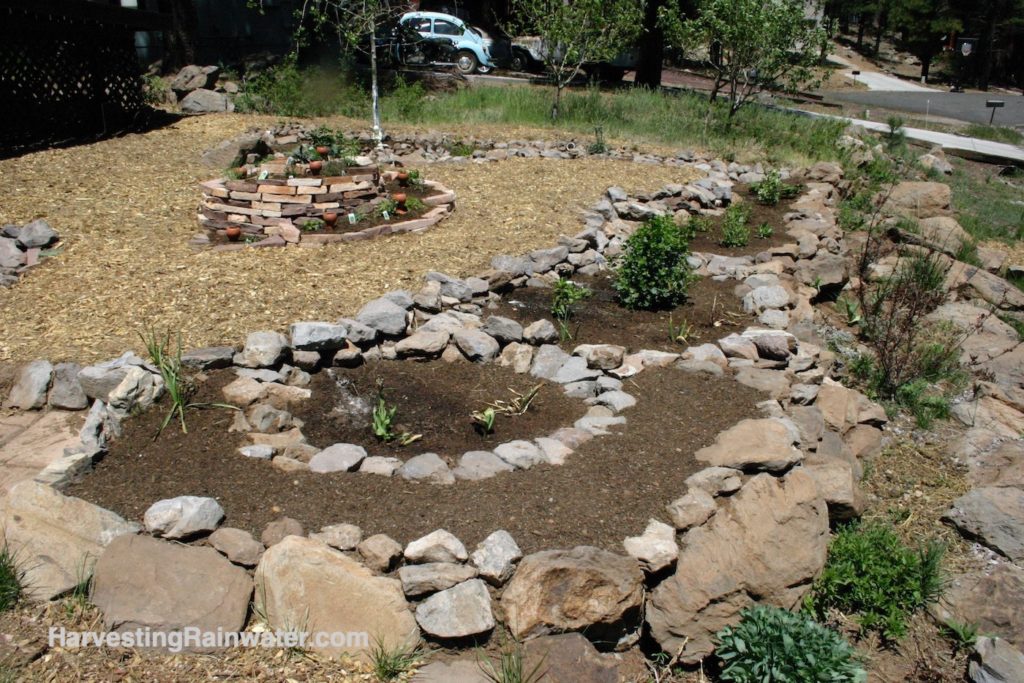
Branched drain plumbing under raised paths.
Pipes outlet to lower mulched basins.
Work by Eden on Earth Landscaping.
Photo: Brad Lancaster
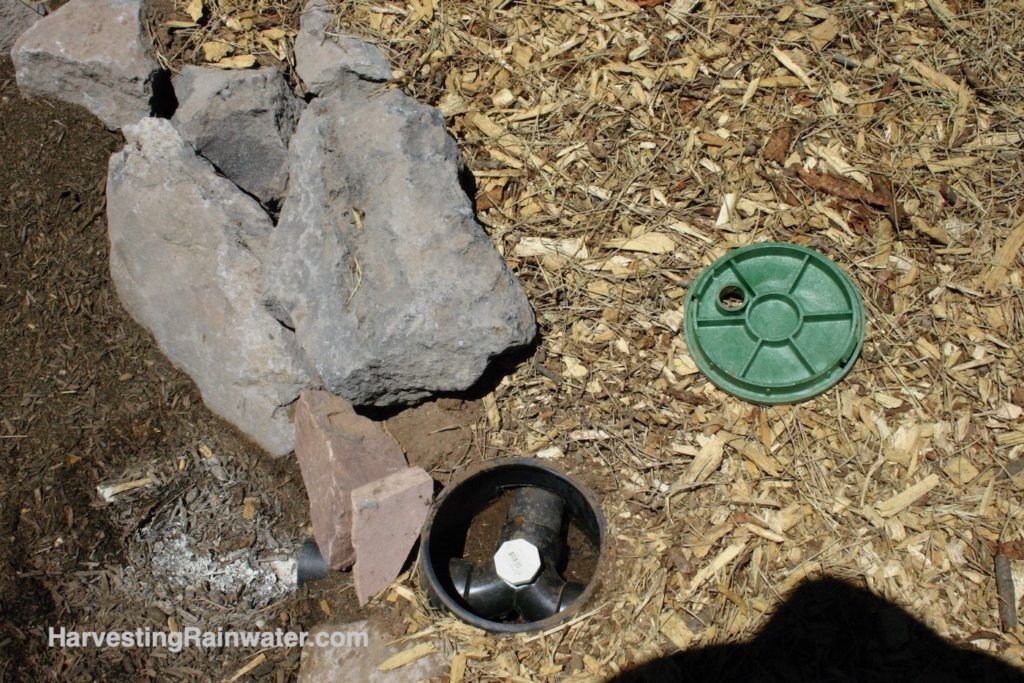
Note how pipe and flow splitters are installed in raised paths, so greywater can more easily be outletted into lower mulched basin. Work by Eden on Earth Landscaping, Flagstaff, Arizona.
Photo: Brad Lancaster
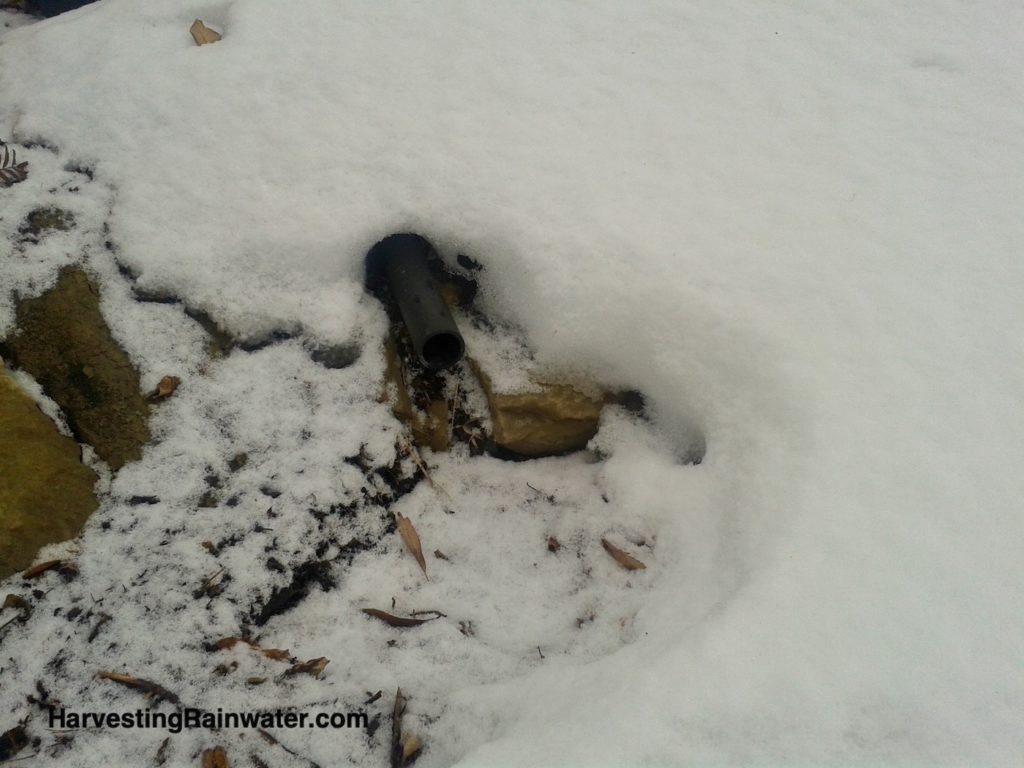
Greywater leaves the house at room temperature so it does not freeze in the pipe which maintains a minimum 2% slope.
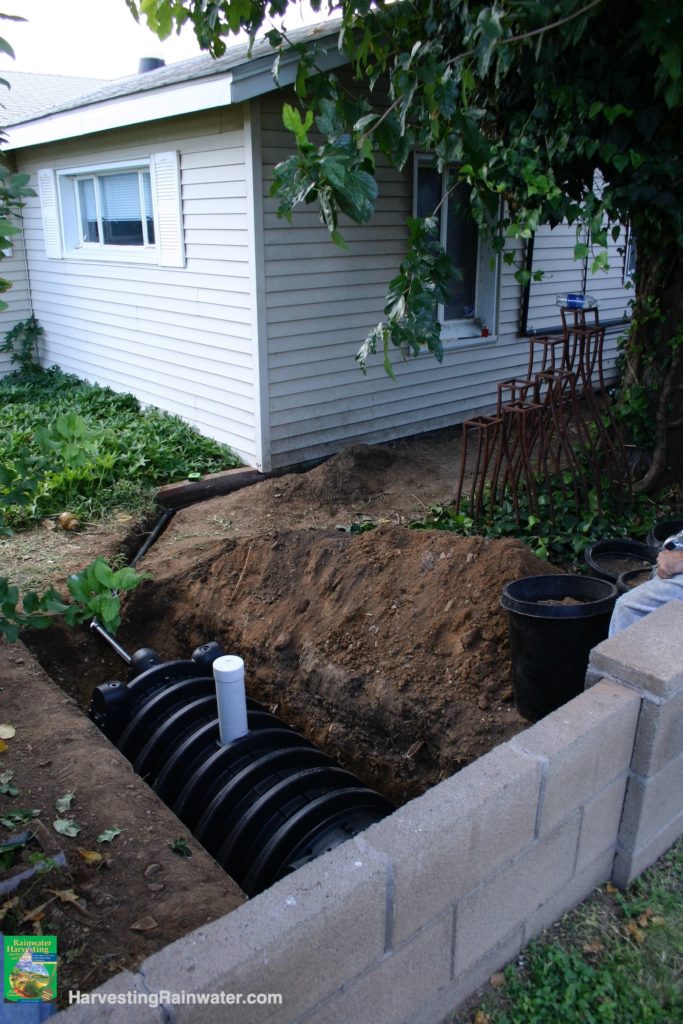
Photo: Brad Lancaster
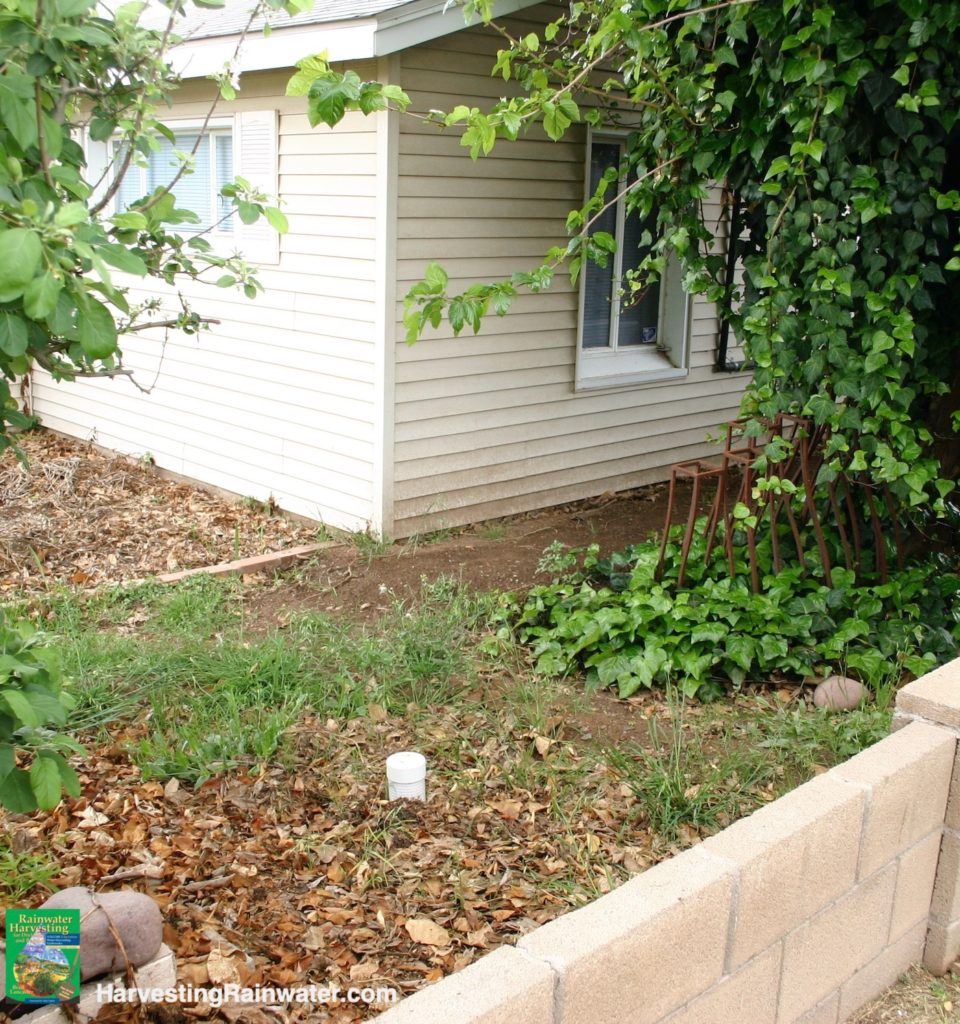
See “Rainwater Harvesting for Drylands and Beyond, Volume 2, 2nd Edition” for more information.
Photo: Brad Lancaster
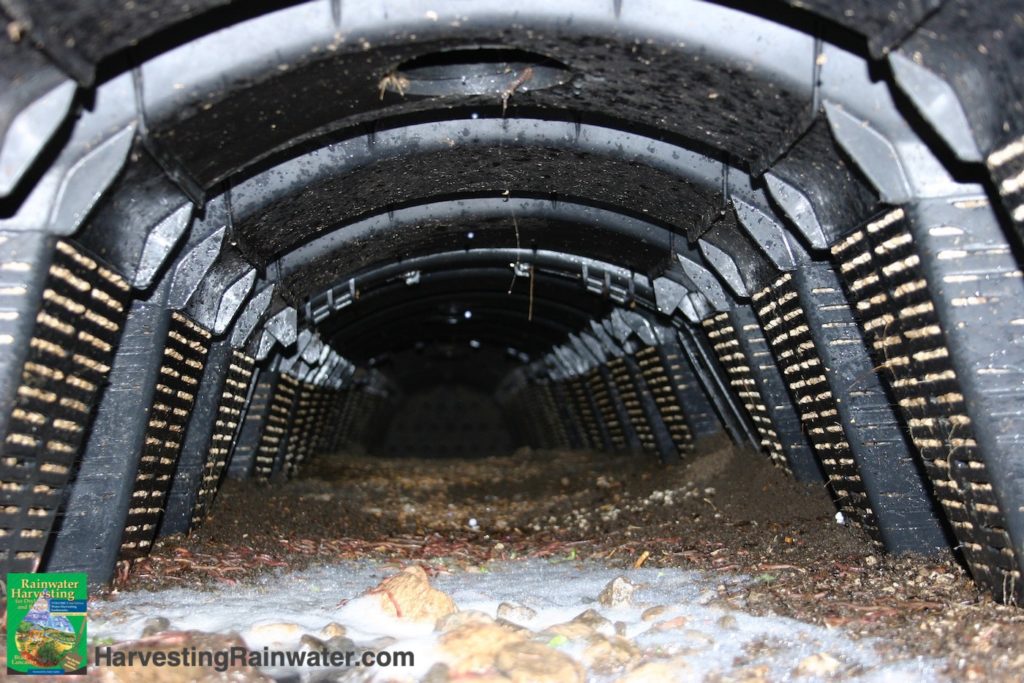
Photo: Brad Lancaster
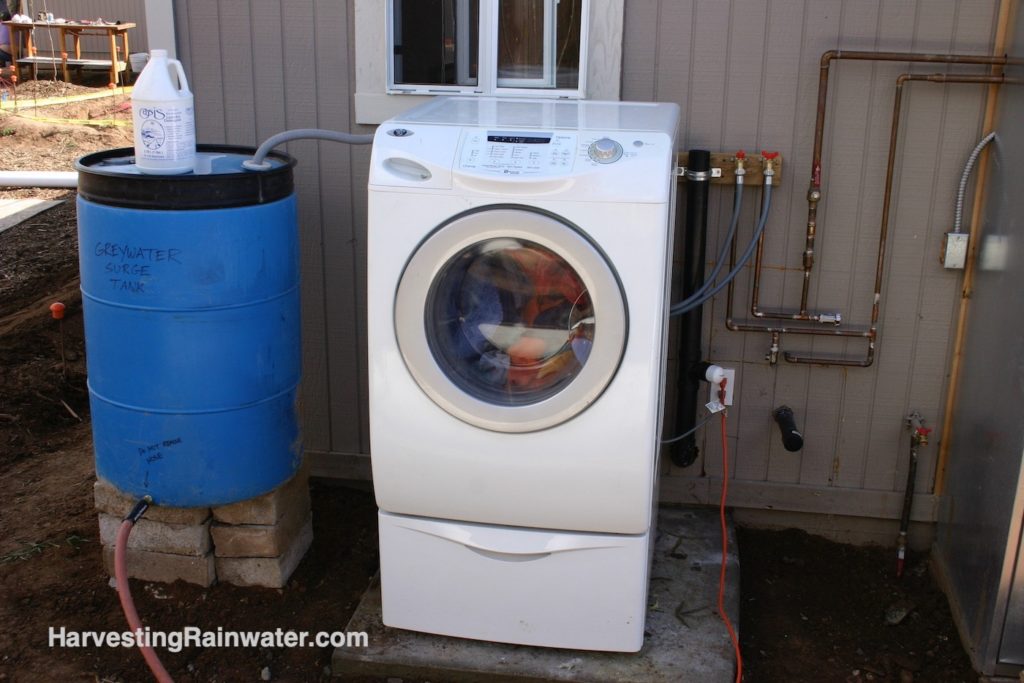
Greywater can be directed to sewer pipe (to right of washer) or landscape via surge tank (to left of washer). Hose can be moved to different plants. Purpose of the surge tank is to protect the washing machine’s drain pump. If the hose gets kinked water won’t back up into washer and burn out its pump, because there is still room in the surge tank for the washer to drain into.
Photo: Brad Lancaster
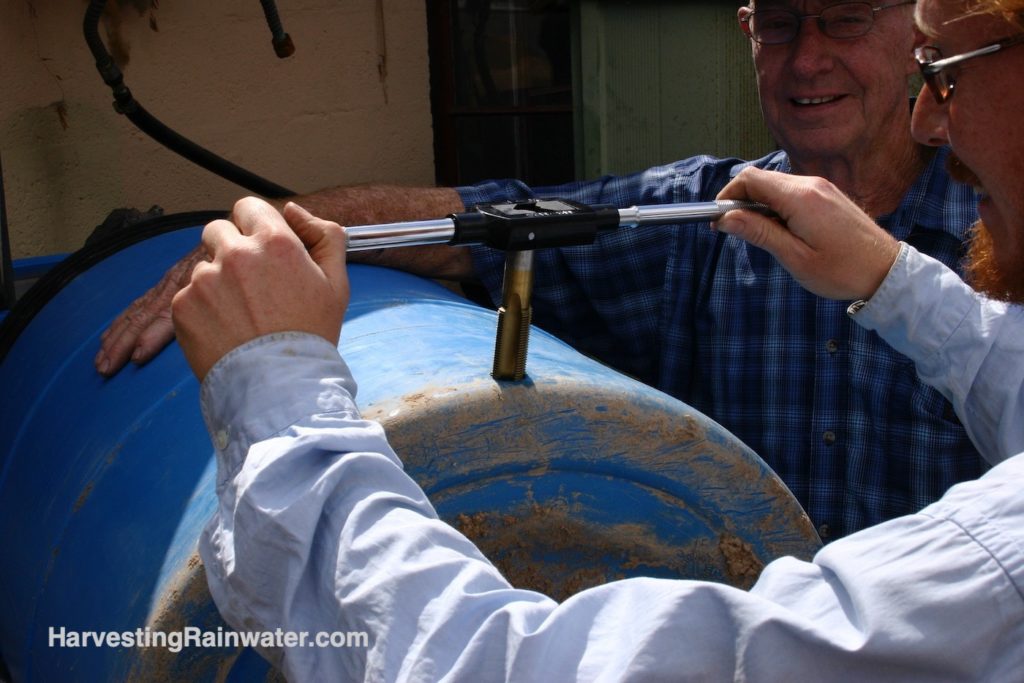
Photo: Brad Lancaster
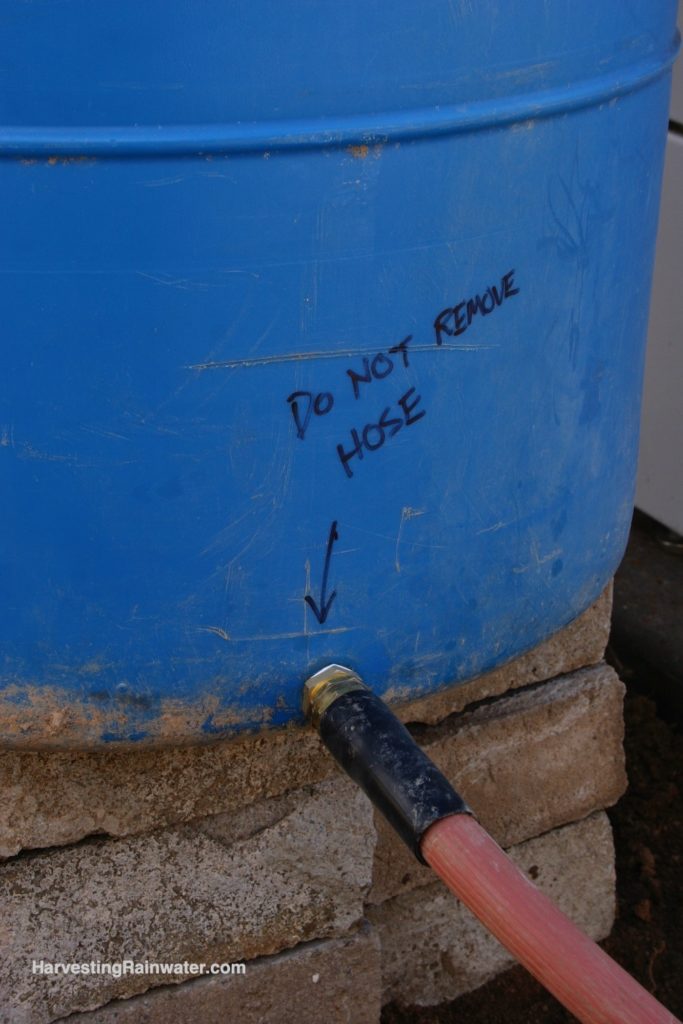
It is not good to store greywater in a tank for more than 1 hour, because it starts to turn septic.
Other end of hose is moved to different plantings to irrigate them with greywater.
Photo: Brad Lancaster
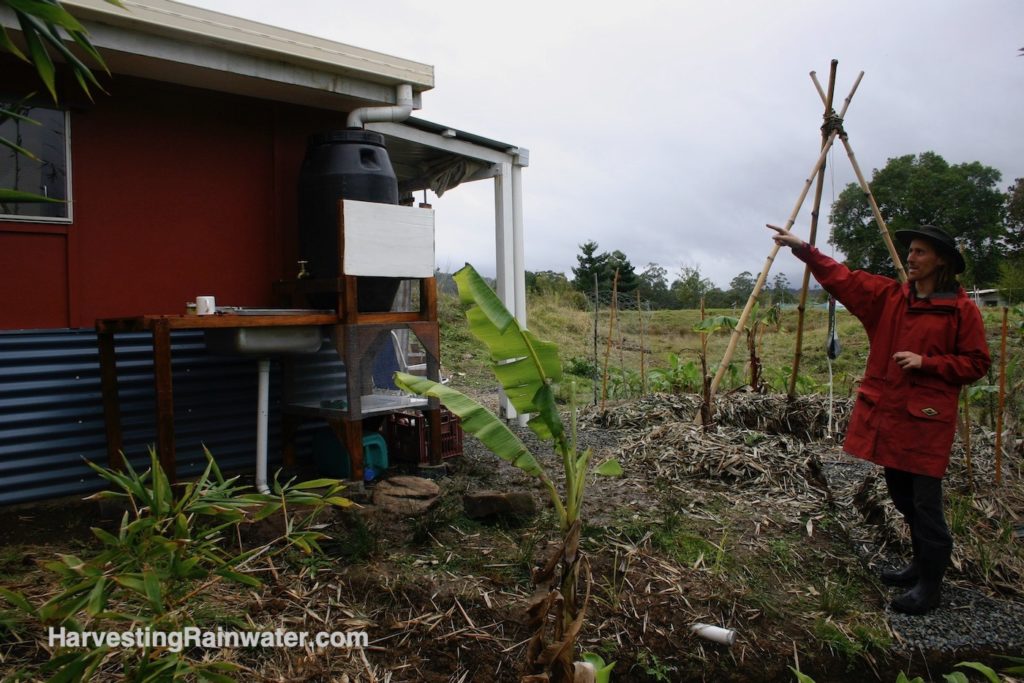
Rainwater from roof is directed to 55-gallon tank that feeds sink.
Sink drain directs greywater to newly planted banana circle. Gravity does all the work.
PermaForest Trust in Queensland, Australia.
Photo: Brad Lancaster
For more
Greywater harvesting image galleries & videos
Greywater harvesting resources
Greywater harvesting case studies
Info on how to design and implement such systems see the greywater harvesting chapter in Rainwater Harvesting for Drylands and Beyond, Volume 2, 2nd Edition available direct from the author at deep discount…
See the new, full-color, revised editions of Brad’s award-winning books
– available a deep discount, direct from Brad:

Volume 1
This is THE book showing you how to conceptualize and design for the effective and integrated harvests of all your free on-site waters.

Volume 2
Check out this book’s wonderful greywater harvesting chapter, its greywater-harvesting principles, and more.
And check out its kitchen sink dark grey water harvesting appendix!
The book shows you many ways to integrated your harvests of greywater and dark greywater with many other free, on-site waters such as rainwater, stormwater, and air conditioning condensate in order to grow more sustainable abundance.
